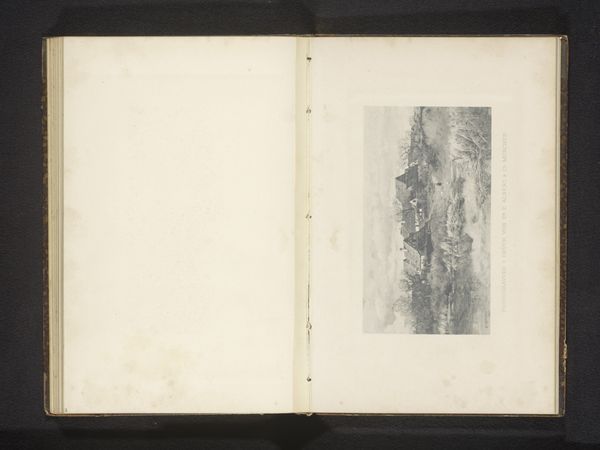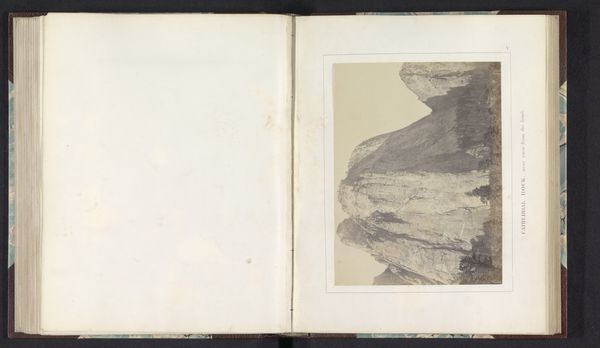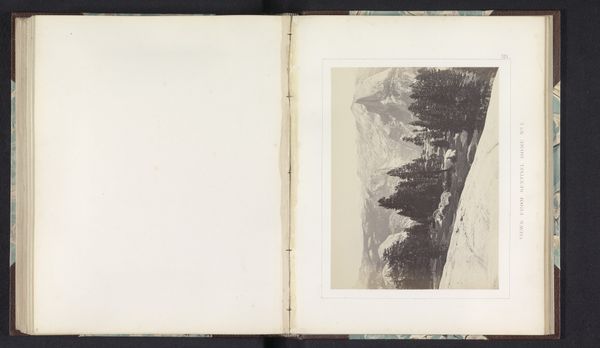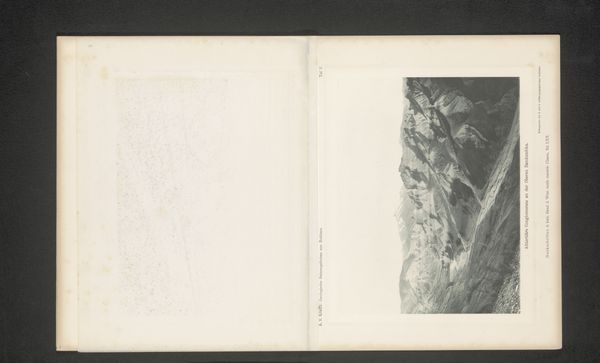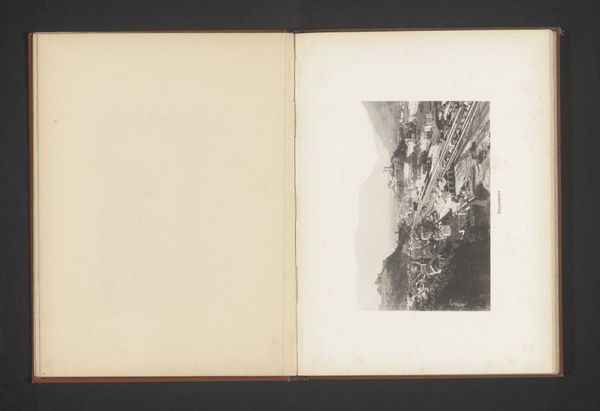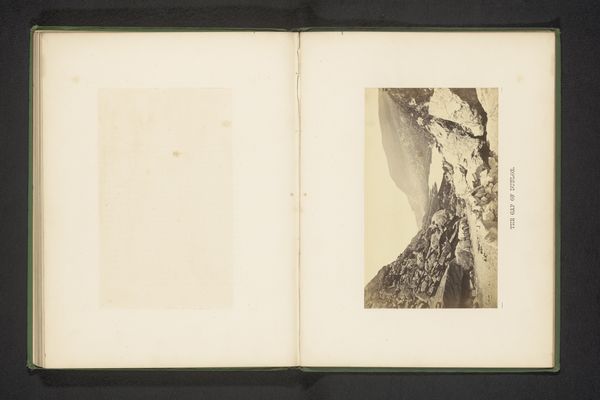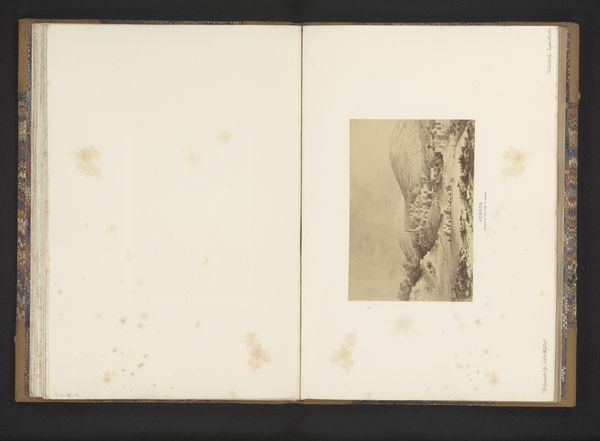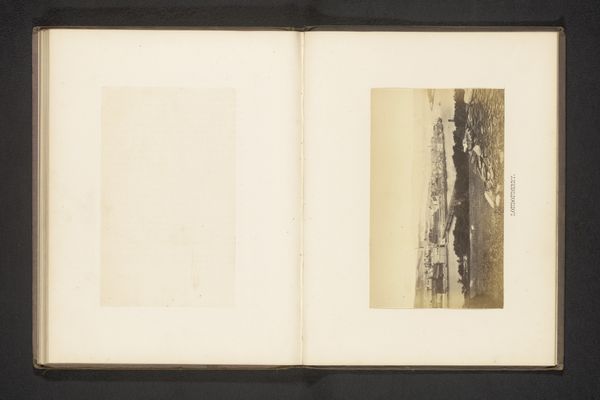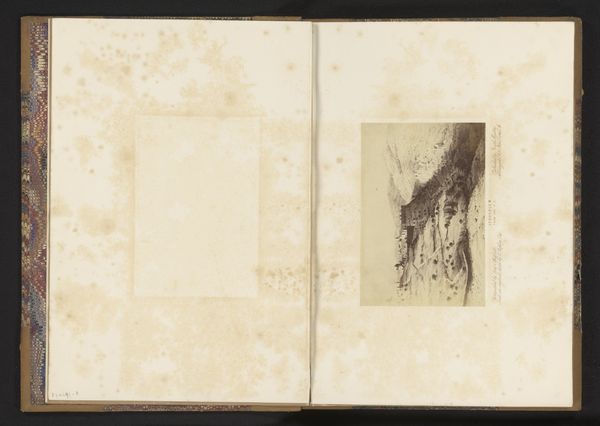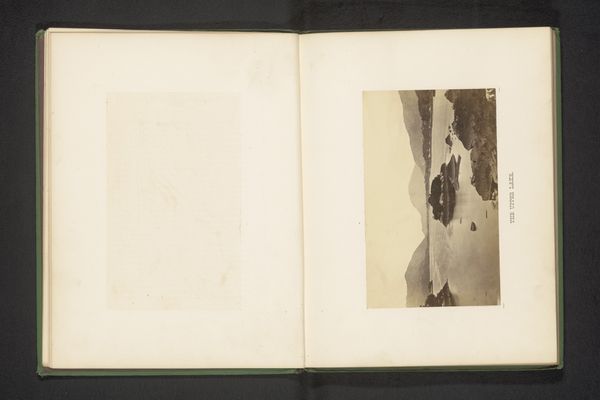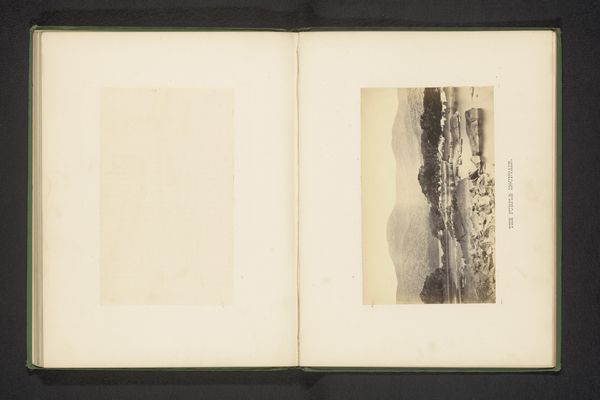
Fotoreproductie van het schilderij 'The sea of Galilee, & Mount of Beatitude' door Conway Shipley before 1865
0:00
0:00
print, photography
# print
#
landscape
#
photography
#
mountain
#
sea
Dimensions: height 110 mm, width 165 mm
Copyright: Rijks Museum: Open Domain
Editor: We are looking at a photogravure of ‘The Sea of Galilee and Mount of Beatitude’ by Conway Shipley, dating from before 1865. The tonal range in this print feels incredibly limited and somber; what strikes you about it? Curator: This work gives us insight into 19th-century landscape photography's role in constructing perceptions of sacred sites. The decision to depict the Sea of Galilee with such solemnity isn’t accidental. How might the artist’s socio-religious context influence his representation? Editor: Well, the title indicates the biblical significance of the site. Maybe this depiction reinforces a certain reverence for these places? Curator: Exactly! Remember, this was a period of intense interest in biblical lands, and photography became a powerful tool for visually documenting and disseminating these "holy" sites to a wide audience. It provided a sense of authenticity to biblical narratives. Think about the economic and social implications; for many Westerners, this would become a commodified view, even promoting religious tourism. Editor: So it's less about pure representation and more about shaping a particular narrative? Curator: Precisely. This photogravure isn’t just a landscape; it’s a constructed image designed to evoke specific emotions and reinforce established cultural and religious viewpoints. Consider its distribution too - was it a single print? Part of a collection? That changes its reach and impact. Editor: I never thought about the role of photography in shaping our understanding of religious landscapes. Curator: Looking closer at how landscape photography has been crucial in not only representing but also actively constructing certain values around places is often enlightening. This makes me reconsider a lot about visual culture from this period.
Comments
No comments
Be the first to comment and join the conversation on the ultimate creative platform.
